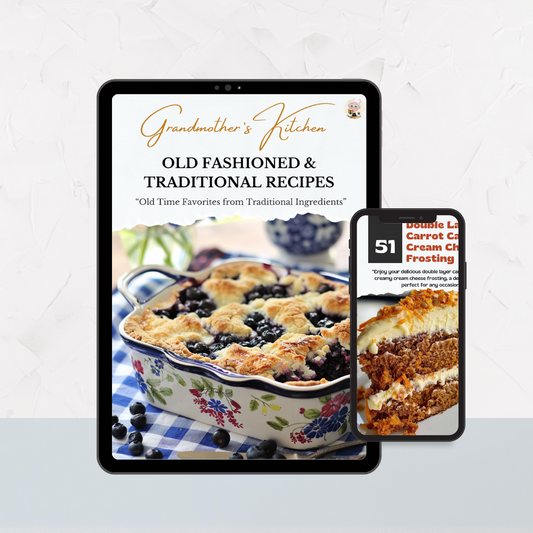How to Can Pears: A Step-by-Step Guide to Preserving Summer's Sweetest Fruit

Share
Preserving Pears: A Tradition Rooted in Necessity
There was a time when preserving the harvest was essential for survival, not just a hobby. My mother, and her mother before her, spent summers canning fruits and vegetables, ensuring we had food through the winter. Grocery stores didn’t stock fresh produce year-round, so they relied on what they grew. Pears were always a favorite, with their delicate sweetness. I can still recall the comforting aroma of simmering fruit in the kitchen as my mother worked. As a young mom, I continued the tradition, filling jars with pears for my children. While I don’t can as much now, those memories remain, and the knowledge passed down is ready to share when needed. Canning today may be more about tradition than necessity, but it’s a wonderful way to savor the flavors of summer.
Did You Know?
Pears have been cultivated for over 3,000 years and are known for their unique texture and sweetness. They are a good source of dietary fiber and vitamin C.
Yield: 6-7 quarts
Ingredients: 10 pounds fresh pears
Water
Lemon juice or ascorbic acid (to prevent browning)
For Sugar Syrup: Light Syrup: 2 cups sugar to 4 cups water
Medium Syrup: 3 cups sugar to 4 cups water
Heavy Syrup: 4 cups sugar to 4 cups water
For Honey Syrup: Light Syrup: 1 cup honey to 4 cups water
Medium Syrup: 1 1/2 cups honey to 4 cups water
Heavy Syrup: 2 cups honey to 4 cups water
Instructions:
1. Prepare the Jars:
Sterilize Jars: Wash jars, lids, and bands in hot, soapy water. Rinse well. Place jars in a large pot, cover with water, and boil for 10 minutes. Keep jars hot until ready to use.
Prepare Lids: Heat lids in simmering water (not boiling) until ready for use. Do not boil. Set bands aside.
2. Prepare the Pears:
Wash and Peel: Wash pears thoroughly. Peel, halve, and core the pears. You can also choose to wash thoroughly and leave the skin on.
Prevent Browning: Treat pears with a solution of water and lemon juice or ascorbic acid to prevent browning.
3. Make the Syrup:
For Sugar Syrup: In a large pot, combine sugar and water. Bring to a boil, stirring until the sugar is dissolved.
For Honey Syrup: In a large pot, combine honey and water. Heat until the honey is dissolved into the water. Do not boil.
4. Pack the Jars:
Pack Pears: Pack the prepared pears into hot jars, leaving about 1/2-inch headspace.
Add Syrup: Pour hot syrup (sugar or honey) over the pears, maintaining the 1/2-inch headspace.
Remove Air Bubbles: Run a non-metallic spatula around the inside of the jar to remove any air bubbles.
Wipe Rims and Apply Lids: Wipe jar rims with a clean, damp cloth. Apply lids and screw bands until fingertip tight.
5. Process the Jars:
Boiling Water Bath: Place jars in a boiling water canner. Ensure they are covered by at least 1-2 inches of water. Process for 25 minutes for pints or 30 minutes for quarts.
Cool Jars: Remove jars and place them on a towel to cool for 12-24 hours. Do not disturb while cooling.
Check Seals: After cooling, check seals. Lids should not flex up and down when pressed. Store in a cool, dark place for up to a year.
Nutritional Information (Per Serving - 1 cup of canned pears):
Calories: 80 (sugar syrup), 90 (honey syrup), Protein: 1g, Carbohydrates: 21g, Fat: 0g, Sugars: 18g
Kitchen Tips, Great Ideas, How to Save Money:
1. Choose Ripe Pears: Use fresh, ripe pears for the best flavor and texture. Avoid overripe or bruised pears.
2. Peeling and Coring: Peeling and coring pears can be time-consuming, but it ensures a better texture in the final product.
3. Sterilization is Key: Always sterilize jars and lids to prevent contamination and ensure a long shelf life.
4. Prevent Browning: Treat pears with a solution of water and lemon juice or ascorbic acid to prevent browning.
5. Proper Sealing: Ensure lids are fingertip tight, not over-tightened, to allow air to escape during processing.
6. Headspace is Important: Leave the correct amount of headspace to allow for expansion during processing and to ensure a proper seal.
7. Remove Air Bubbles: Removing air bubbles prevents trapped air, which can lead to spoilage. Use a non-metallic utensil to avoid damaging jars.
8. Storage Conditions: Store canned pears in a cool, dark place to maintain quality and prevent spoilage. Avoid storing near heat sources or in direct sunlight.
9. Labeling Jars: Always label jars with the date and contents. This helps keep track of inventory and ensures you use older jars first.
10. Syrup Variations: Experiment with different types of honey (e.g., clover, wildflower) to find your preferred flavor profile.
Let’s Learn a Little About Different Pear Varieties
Pears come in a variety of shapes, colors, and flavors, each with its unique characteristics. Some of the most popular varieties include:
Bartlett Pears: These are the most commonly canned pears, known for their sweet flavor and smooth texture. They turn from green to yellow as they ripen.
Bosc Pears: With their russeted skin and firm, dense flesh, Bosc pears hold up well during cooking, making them a great choice for canning.
Anjou Pears: Anjou pears are sweet and juicy with a slightly rounded shape. They come in green and red varieties and are excellent for fresh eating as well as canning.
Comice Pears: Known for their creamy texture and sweet flavor, Comice pears are often considered the best for eating fresh, but they can also be canned.
Seckel Pears: These small, sweet pears are often used for pickling or canning whole. Their size and sweetness make them a unique addition to any pantry.
When selecting pears for canning, choose varieties that are firm and slightly underripe. This will ensure they hold their shape and texture during the canning process, resulting in delicious, long-lasting preserves.


